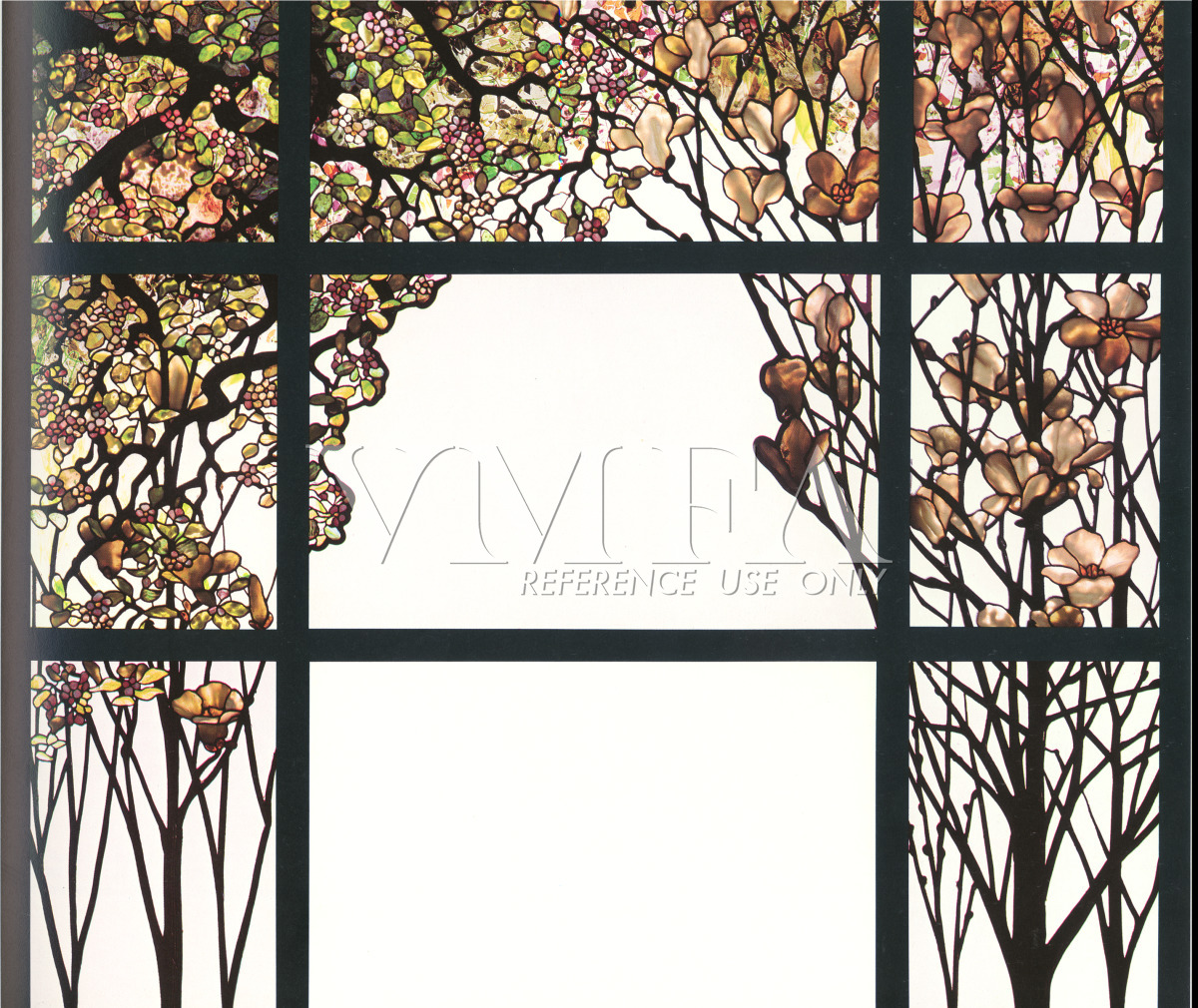
Magnolia and Apple Blossom Window (for George E. Dimock residence, Elizabeth, New Jersey) (Primary Title)
Tiffany Glass & Decorating Company, American, New York, 1892 - 1900 (Artist)
George E. Dimok commissioned this window around 1900 for the study at his house in Elizabeth, New Jersey. Nine separate panels of clear glass make up this large window. The apple blossoms on the left are intertwined with magnolias on the right that arch up over the central window. “Drapery glass,” which is glass that has been folded and bent to form realistic thick waves, is used to create the petals of the magnolia. Small, irregularly shaped pieces of fractured glass create depth, shading, and color for the apple blossoms. The lead strips, called cames, that hold the glass together were designed to simulate bark and branches.
Sydney and Frances Lewis Art Nouveau Fund
Image released via Creative Commons CC-BY-NC
Some object records are not complete and do not reflect VMFA's full and current knowledge. VMFA makes routine updates as records are reviewed and enhanced.

